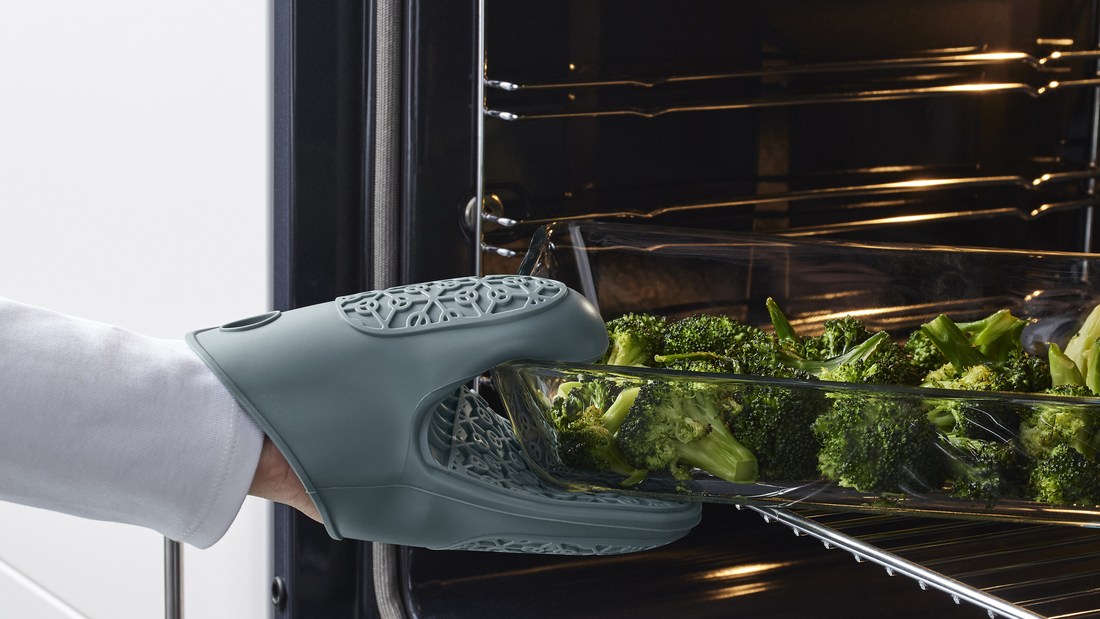Electric ovens have become a staple in many modern kitchens. With precise temperature control and a variety of advanced features, electric ovens allow you to create a variety of delicious dishes, from crispy cookies to juicy roasts.
We will provide you with a complete guide to mastering the electric oven, ensuring every dish you cook comes out of the oven perfectly. We will cover preparations from start to finish.
Also read:
A traditional black kitchen in a small space
Preparation before using an electric oven
Before you embark on your culinary adventure with an electric oven, there are some important preparations to make:
- Preheating: Just like athletes warm up before a game, electric ovens also need preheating. This ensures that the temperature inside the oven is stable and even when you put the food in, preventing undercooked or burnt results.
- Check electrical power: Make sure the electrical power in your home is sufficient to operate the electric oven. Check the voltage and power capacity required by your oven to avoid problems such as power outages or damage to the oven.
- Master the control panel: Familiarize yourself with the oven's control panel and how to set the desired temperature. Some ovens have a preheat feature, make sure you understand how to use it. Read the manual or user guide for your electric oven to understand the various features and functions available.
How to use an electric oven for various types of cooking
There are various ways to use an oven for different techniques, such as baking, grilling, and roasting, depending on the food and desired results. Here's a detailed explanation:
Baking
- Preheating: The first and very important step is to preheat the oven to the temperature specified in the recipe. Make sure the oven rack is in the correct position according to the type of food you will be baking. Preheating ensures that the oven reaches the desired temperature before the food is put in, so the baking process runs optimally.
- Prepare the dough: Prepare the cake or bread dough according to the recipe carefully. Make sure the dough is not too runny or too thick for perfect results. Dough that is too runny will be difficult to rise and cook, while dough that is too thick will result in dense and hard cakes or bread.
- Put the dough in the oven: Pour the dough into a baking pan that has been greased with butter or lined with baking paper to prevent the dough from sticking. Place the pan in the preheated oven. Make sure the pan is placed in the center of the rack for even heat distribution.
- Set baking time: Set the oven timer according to the time specified in the recipe. Avoid opening the oven door too often during the baking process, as this can cause the temperature inside the oven to drop drastically and disrupt the baking process.
- Check doneness: After the baking time is complete, poke the cake or bread with a toothpick. If the toothpick comes out clean, it means the cake or bread is perfectly cooked. If there is still dough sticking to it, bake for a few more minutes and check the doneness again.
Grilling
- Preheating: Preheat the oven with the grill mode at a high temperature. The grill mode will heat the heating element at the top of the oven, producing intense heat to quickly cook the surface of the food.
- Prepare the food: Prepare the food you will grill, such as meat, fish, or vegetables. Season or marinate according to your taste to make the flavor richer and more delicious.
- Place the food under the grill: Place the food on the grill rack or a baking sheet lined with aluminum foil. Make sure the food is not too close to the heating element to avoid burning. The ideal distance between the food and the heating element is usually about 10-15 cm.
- Grilling: Place the grill rack or baking sheet in the oven. Turn the food periodically to ensure even cooking and get perfect grilling results with an attractive brown color.
- Check doneness: Check the doneness of the food visually or by using a meat thermometer. Make sure the inside of the food is also cooked thoroughly before serving.
Roasting
- Preheating: Preheat the oven to the temperature specified in the recipe. Roasting usually requires a lower temperature than grilling, around 180-200 degrees Celsius.
- Prepare the food: Prepare the food you will roast, such as meat, chicken, or vegetables. Season or marinate according to your taste so that the flavor penetrates perfectly into the food.
- Place the food in a baking pan: Place the food on a baking pan that has been greased with oil or lined with aluminum foil to prevent the food from sticking.
- Roasting: Place the baking pan in the oven. Make sure there is enough space around the pan for good air circulation, so the heat can spread evenly and the food cooks perfectly.
- Check doneness: Check the doneness of the food visually or by using a meat thermometer. Make sure the inside of the food is also cooked thoroughly before serving. You can also use a fork to check if the meat is tender.
Tips for using the timer and temperature settings






